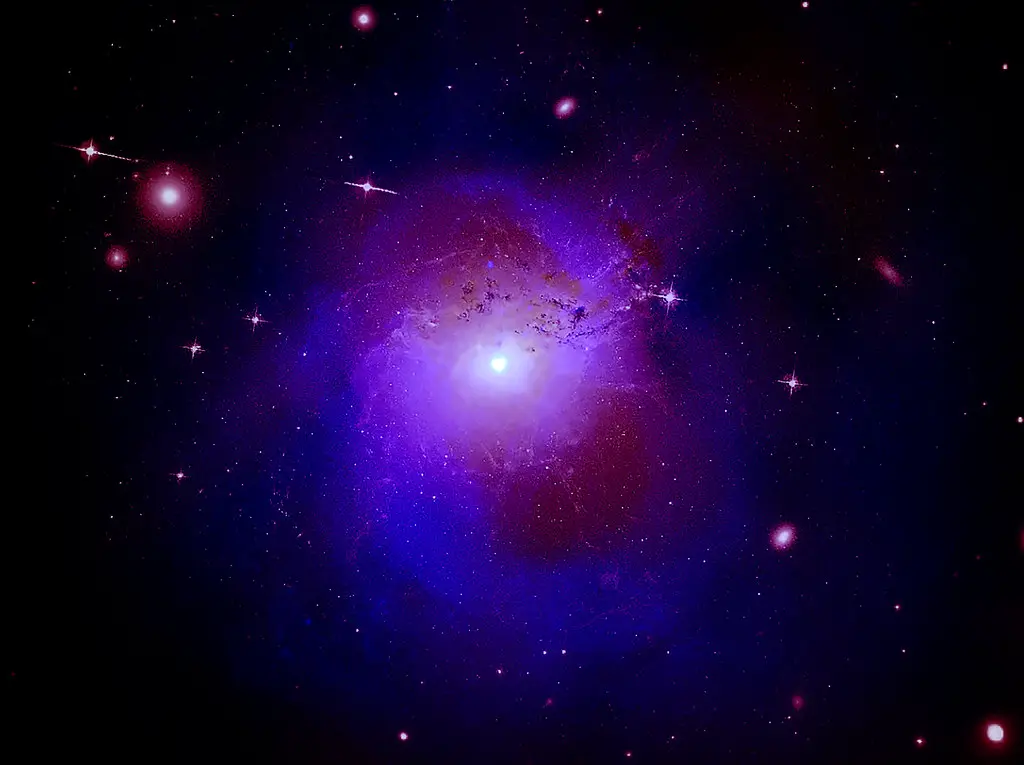The mystery that surrounds the concept of “dark matter” has long been a source of fascination for the scientific community since it presents a conundrum that has not been completely solved. Dark matter is thought to play a crucial part in the formation of the universe as we know it, despite the fact that it is invisible and difficult to locate. A perplexing query that emerges is, “How much of this mysterious substance actually exists on our very own planet, Earth?” (How much of this mysterious substance actually exists on our very own world). We dig into the fascinating topic of dark matter and investigate the current understanding of its presence on Earth in this article.
An Explanation of Dark Matter
Dark matter is a hypothesized type of matter that does not emit, absorb, or reflect light. Because of this, it cannot be seen and cannot be found through traditional methods of investigation. Its gravitational effects on observable stuff and the overall structure of the cosmos provide strong evidence for the existence of this object. The amount of conventional matter that makes up the universe’s stars, planets, and galaxies is dwarfed by the amount of dark matter that scientists estimate to make up around 85 percent of all the matter in the universe.
Dark Matter on Earth
It Is legitimate to examine the Presence of Dark Matter on Earth Considering how prevalent dark matter is across the universe, it is legitimate to examine the possibility of its presence on Earth. Nevertheless, either discovering or estimating the presence of dark matter on our planet presents a significant hurdle. According to the most recent findings in the scientific community, particles of dark matter interact with conventional matter in an exceedingly weak way, which makes the task of detecting them a challenging one.
Experiments That Focus On Direct Detection
A wide variety of experiments that focus on direct detection have been carried out in order to look for particles of dark matter on Earth. In most cases, very sensitive detectors are buried deep underground as part of these tests so that they can avoid being affected by background radiation. Direct detection experiments have not yet revealed definitive evidence of dark matter interactions at the terrestrial level, despite the numerous attempts that have been made. Nevertheless, the results of these experiments have imposed strict limits on the characteristics of dark matter particles, and we are continuing to improve our comprehension of the possibility that they exist on Earth.
Methods of Indirect Detection
The use of methods of indirect detection offers an additional strategy for discovering the existence of dark matter on Earth. The hunt for energizing particles or radiation that may have been produced by the putative annihilation or disintegration of dark matter is at the heart of these methodologies. Nevertheless, determining the precise source of such signals and distinguishing them from other astronomical sources will continue to be a challenging endeavor. Indirect detection methods have not been able to unearth any evidence that can be taken as definitive proof of the existence of dark matter anywhere on Earth.
Effects on Gravitation
Despite the fact that direct and indirect detection investigations have not yet produced conclusive results, the gravitational effects that dark matter has on Earth are not ignorable. The gravitational pull of dark matter may be felt everywhere in the universe, influencing the location and motion of visible stuff such as galaxies, stars, and even our very own Milky Way. On Earth, the gravitational pull of dark matter could possibly contribute to the stability and dynamics of our planet and the celestial bodies that surround it, although the exact nature of this contribution is not yet completely understood.
The Enigma Is Still There Despite the Absence of Direct Evidence
The existence of dark matter on Earth is still a distinct possibility despite the fact that there is no direct evidence to support this hypothesis. If dark matter were present on the planet, it would very certainly be evenly dispersed across its surface, which would have an impact on the planet’s gravitational dynamics. On the other hand, the precise amount of dark matter particles or their concentration on Earth is not yet fully understood.
The Road Ahead
In order to solve the riddle of dark matter on Earth, we will need to make additional strides in the development of detection methods and proceed with the investigation of its characteristics. Experiments in the future, such as the next generation of direct detection experiments and space-based observatories, may provide invaluable insights into the composition of dark matter particles and their prevalence on our planet.
Conclusion
Dark matter is an invisible cosmic phenomenon that is thought to hold the key to understanding the structure and evolution of our universe, and it continues to be a source of fascination for scientists as they seek to learn more about it. Even if direct detection investigations have not yet unearthed irrefutable proof of dark matter on Earth, the gravitational effects that it has on our world suggest that it is present. Researchers are being encouraged to push the limits of scientific exploration in order to shed light on the compelling cosmic mystery that is dark matter, which remains an unsolved mystery.
![]()
